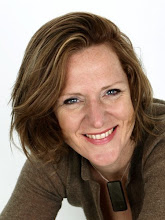DOES YOUR BACK ACHE WHEN YOU RUN?
Running analysis is something I really enjoy doing, as it is a great way to see how runners are moving, helping to identify which muscles are working and show potential areas of problems which can contribution to back ache.
Back ache, which can be due to a number of different reasons, is often seen as too little or too much mobility of the spine which can significantly affect performance.
However it cannot be assumed that the problem rests solely with the back itself as tightness and weakness of muscles and/or altered foot, knee and hip mechanics can all have an impact on our spine.
If you are suffering with back pain which is stopping you from running I advise that you contact a qualified chartered physio to address the specifics of your presentation/problems.
If, for example, you find that you occasionally feel back ache at the end of run, I would advise you to have your running analysed by a physio who specialises in this to identify the likely contributing factors.
If you would like some simple pointers on how you might be able to get your back and core muscles into action - which may help with your running performance the following may be helpful. However again, if you struggle with any of the exercises or any of them aggravate anything I really would encourage you to see a physio for specific advice about your needs.
Ok here goes. First of all - a good posture is essential. I know physios go on and on about posture but it really is very important. As many of the muscles that keep us upright and mobile are attached to our spine and pelvis, getting our back curves and pelvis into the right position helps to get the best control/length/strength from our muscles.
One suggestion you can try to help get a good posture is to imagine there is a piece of string attached to the top of your head pulling you upright - please note though - this is not about sticking your chest out!
Next, core stability. I've just had a look at some of the websites that show core stability exercises and they tend to go straight to doing exercises like the 'plank' and 'oblique strengthening'. I strongly recommend that these exercises are NOT the first ones you undertake. I suggest the first muscle that should be addressed is 'transverse abdominus' - which acts as our abdominal 'corset'. This muscle is the deepest abdominal muscle and goes all around our trunk. There are a number of ways to try to activate this muscle one way is to try tightening your pelvic floor muscle - not your 'washboard' - and remember to keep breathing!
The next key muscle is 'multifidus' which runs either side of the lower spine. Try taking a light weight in one hand and raising a straight arm forward - this will work the opposite back muscle - repeat on the other side - remember to keep your good posture throughout!
Assuming you are not in pain and that the muscles mentioned above are working well, why not have a go at the more challenging exercises on this link
Earlier I mentioned the contribution to back problems that altered foot, knee and hip mechanics can have. One key way to help address some of these problems is with making sure you have the right trainers. I keep coming back to the importance of trainers but it really is vital to get this bit of kit right and also remember that trainers don't last forever! Most will be good for between 400-500 miles then will need replacing. Make sure you go to a good shop which looks at you running. Try on a few pairs to make sure you've chosen the most comfortable one for you which also offers enough support.
Hope that helps.
Labels: back pain, bristol, core stability, physiotherapy, posture, running analysis, trainers

